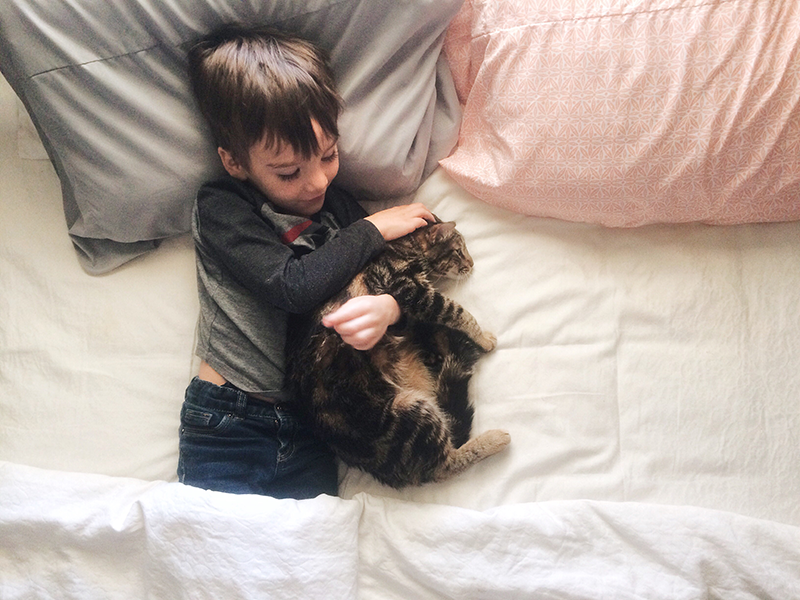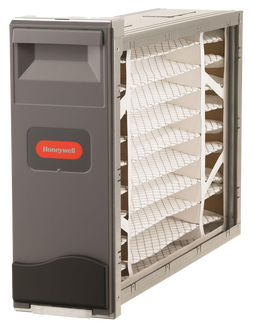Did you know that the average household has 1.6 dogs, 1.8 cats, and/or 2.1 birds? Pets provide us with many benefits, take petting your dog for instance. Studies show that cortisol (the stress hormone) levels lower when you pet your dog or cat.
While having lower stress levels is great – endless sneezing fits from pet dander flying around is not. One out of every 10 people are actually allergic to their pets! And even if you don’t have a specific allergy towards your pet, breathing in high amounts of pet dander every day is not good for your overall health.
In this article we will share tips on how homeowners can improve their indoor air quality and fight allergies, bacteria particles, and smelly pet odors while living with their pets.
What is pet dander and how can it affect me?
Pet dander can cause a runny or stuffy nose, sneezing, itchy or watery eyes, and shortness of breath. Coming into physical contact with pet dander can cause contact dermatitis, hives or triggers a person’s asthma.

How can I reduce the amount of dust and dander in my home?
Air filters come with a MERV rating system which stands for Minimum Efficiency Reporting Value. This rates the filter’s ability to collect and remove larger particles before they get circulated back into your home. 1 is the lowest MERV rating an 14-16 is the highest. Look for a filter that has a MERV rating of 13-16 for the best allergen particle removal.
The thickness of a filter is also something to pay attention to. A media filter is 4 inches thick and will perform better than a standard one-inch filter. If you aren’t sure what air filter is best for your HVAC system, call us at 281-356-8564 for help.
Around every 90 days you should replace your air filter to help maintain good air flow and keep particles and allergens out of the air you breathe. If you have multiple pets in the home or your air conditioning unit is working harder, like in the summer, you may want to replace your filter sooner than 90 days.


Trane CleanEffects™ Filter
- Removal of up to 99.98% of particles and allergens from your filtered indoor air. It removes particles as small as .1 microns – 1/1,000th the diameter of a human hair – a size that eludes most air cleaners.
- Industry-leading clean air delivery rate of 1,200.
- Low operating costs, with no replacement filters to buy.
- Cleaning indicators easily visible on the outside of the unit.
- Easy-to-clean filters. Just vacuum or rinse once every 3 to 9 months (depending on usage).
- Easy installation.
- Quiet operation.
- Trane CleanEffects™ Air Cleaner was designed to fall well below the 50 parts per billion (ppb) FDA voluntary emission limit for medical devices. Trane CleanEffects™ contributes a negligible amount of ozone – less than .3 ppb to the living space.
- Typical ozone levels during the summer outdoors are at about 60 to 90 ppb, and indoor levels can vary greatly but are typically between 12 ppb to more than 80 ppb. Testing of Trane CleanEffects™ Air Cleaner by third parties has shown there’s no more ozone in a home installed with Trane CleanEffects™ than what naturally occurs in the environment already.
- A Trane air cleaner is the industry benchmark supported and verified by third parties who make it their business to know about clean air.
- Minimal pressure drop. Delivering more clean air by volume to your living space.


Honeywell Whole-House Media Air Cleaner
- The F100 Whole-House Media Air Cleaner is up to 85% more efficient at capturing both microscopic particles like dust and smoke in addition to larger contaminants such as mold spores and pet dander. This highly effective air cleaner also requires minimal maintenance. Basically, once you install the filter you only need to replace it every 6-12 months. That’s four times longer than a standard one-inch furnace filter.
- Up to 85% more efficient at capturing airborne particles compared to a standard one-inch filter.
- Captures both microscopic particles and larger contaminants.
- Lasts up to four times longer than a standard one-inch furnace filter.
- Replace filter every 6-12 months.
- Widely compatible.
- Easy to upgrade to a higher-performance electronic air cleaner.
- Five-year warranty.
- Professional installation.
Air Scrubbers: These are the ultimate defense in improving your overall air quality. Check out the benefits below and dive into a detailed article here.


- ActivePure® Technology uses light waves and a catalytic process to produce scrubber ions that remove dust particles from the air.
- Certified Space Technology continuously protects and purifies the air, and attacks contaminants on all surfaces.
- Proven effective in University studies on various contaminants in the air and on surfaces.
- Installed by a professional directly to the existing HVAC system ductwork.
- ActivePure® Technology destroys up to 99% of surface and airborne contaminants.
- Significantly reduces dust, pet dander and odors in the home
- Purifies the air and reduces particles that can irritate allergies and asthma.
- Protects people from dangerous contaminants and pollutants, and protects heating and cooling system from dust buildup
- Creates healthy, pure indoor spaces.
- Available in ozone and ozone-free models.
- Coverage up to 3,000 sq. ft.
What’s the next step?






